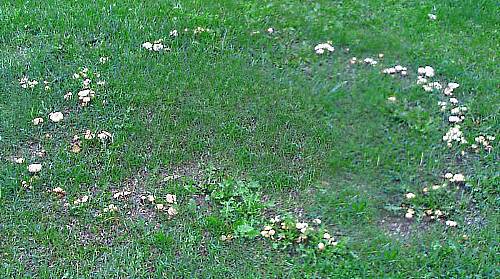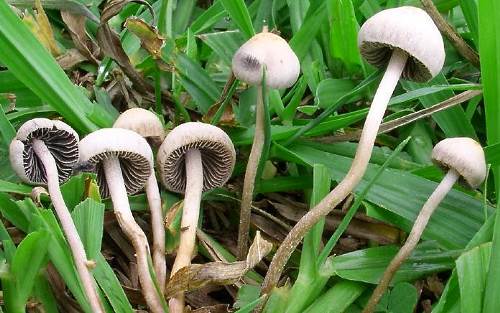Toadstool mushrooms on the lawn - what to do?

Every gardener wants to have a well-groomed and beautiful lawn on his site, but sometimes this dream is spoiled by toadstools on the lawn. The appearance of fungi on the lawn is caused either by too damp soil, or overly acidic soil. At the same time, the quality of the soil in which the mushrooms grow is always at its best, since the mushrooms do not take root in an unhealthy or poorly favorable environment. Everything would be fine, however, when mushrooms grow, they release such substances, the excess of which affects the soil and causes bald spots on the lawn. Fungi reproduce by spores that travel through the air and, when they get on the soil, infect it, causing areas to darken. Further, these areas are overgrown with mushrooms. If you clean the soil in time, then there will be no problems with the appearance of fungi.

There are the simplest and most affordable methods of caring for a lawn that is affected by fungi:
- Reduce watering to avoid excess soil moisture. Dampness can also cause excessive shade on the lawn, so take the trouble to thin out trees or bushes that may be causing shade.
- Handle the mushroom removal by hand, very carefully so as not to provoke the spread of mushroom spores. This can be done with a small knife; hold the mushrooms, cut them off and put them in a bucket or other deep container.
- Remove foliage and other biodegradable debris from your lawn, which provides a favorable environment for fungal growth. Fallen leaves not only spoil the aesthetic appearance of the lawn, but also have a positive effect on the growth of mycelium. To do this, use a rake or any other tool.
- Be sure to get rid of old stumps, on which toadstools appear very often. There are many methods of getting rid of stumps and old roots, ranging from chemical to mechanical.
- Spread sand on your lawn in the fall. When doing this, choose the smallest grains of sand.
In addition to the above methods, there are a number of more complex procedures for getting rid of mushrooms on the lawn:
- Aeration of the soil. This procedure is carried out in several ways. For manual work in the garden, a special aeration rake is enough, but if your lawn occupies a large area, then for greater efficiency it is worth purchasing an electric or gasoline aerator. This procedure must be carried out after every third lawn mow. Submerge the teeth no more than ten centimeters during the aeration process. Scarification should be done at the beginning and at the end of the season (spring, autumn).
- Fertilizer application. Treat the soil with organic fertilizers and antiseptics, which will greatly help in maintaining the soil. The most suitable solution for the fertilization process will be a solution of copper sulfate: dilute 20 grams of powder in 10 liters of water. Spray the lawn with this mixture at most once a month.
Important! Remember that removing fungi with harsh chemicals will damage your lawn grass and reduce soil quality. This may affect further care.
In addition, many experts in the field of agriculture advise getting rid of the top ten centimeters of the earth, which will help get rid of the mycelium, which is the breeding ground for all the mushrooms on your lawn. Keep in mind that after such a procedure, you will have to renew the sowing of the grass, but you should not rely on this method, since the mycelium can grow into the soil by 50 centimeters or more.
Good luck in your fight for a clean and well-groomed lawn!